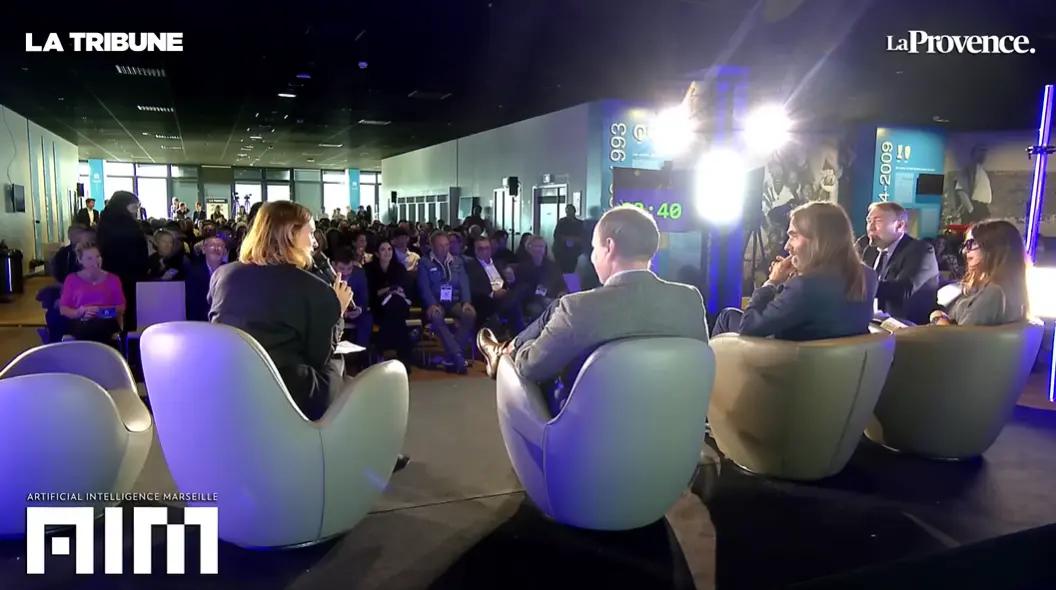August 16, 2024|16 min reading
Elephant Communication: How AI is Decoding the Secret Language of African Elephants

The vast savannas of Africa echo with the deep rumbles and calls of the majestic African elephants. These creatures, known for their intelligence and strong family bonds, communicate in ways that are just beginning to be understood by science. For decades, researchers like Joyce Poole have dedicated their lives to studying these gentle giants, uncovering remarkable insights into their communication methods. With the advent of AI, this research has taken a revolutionary turn, suggesting that elephants might even have a way of addressing each other by "name." This groundbreaking discovery has the potential to reshape our understanding of animal communication and the complex social structures within the animal kingdom.
The Early Observations: Joyce Poole's Insightful Discovery
Joyce Poole, a pioneering researcher in the field of elephant behavior, first noticed something extraordinary in the 1980s. While observing a herd of African elephants, she observed a fascinating pattern. When an elephant called out, only one specific individual would respond, while the others seemed to ignore the call. This led Poole to hypothesize that elephants might possess a sophisticated communication system, one that allows them to direct calls to specific individuals within their group. However, at that time, there was no way to verify this theory scientifically.
Poole's initial observations laid the groundwork for future research. She wondered if elephants could potentially have a way of "naming" each other, a concept that seemed far-fetched but intriguing. The idea that non-human animals could have such complex communication was, and still is, a topic of much debate in the scientific community.
Partnering with Technology: The Role of Mickey Pardo and AI
Decades later, the advent of advanced technology provided the tools needed to explore Poole's hypothesis further. Enter Mickey Pardo, an innovative researcher who partnered with Poole to design a study around her observations. Pardo's approach was to use machine learning, a branch of AI, to analyze the acoustic patterns in elephant calls. By encoding these calls into a long string of numbers and combining them with behavioral data, they could feed this information into a statistical model.
The results were astonishing. The model could predict, with significant accuracy, which elephant a particular call was directed to. This was much more than a simple identification of the caller; it was evidence that the calls contained information about the intended recipient. In essence, this suggested that elephants might indeed be using specific vocalizations as names for each other.
The Implications of Elephant "Names"
The idea that African elephants use names for individual communication is a groundbreaking concept with profound implications. It suggests a level of social complexity and cognitive ability in these animals that parallels human language in some ways. Elephants are known for their strong family bonds, memory, and emotional depth, and this discovery adds another layer to our understanding of their social lives.
If elephants do have a system of naming, it could explain how they maintain such intricate social structures over large distances and across various groups. It could also shed light on how they pass knowledge and traditions from one generation to the next, a trait that is already well-documented among elephants.
The Evolution of AI in Animal Communication Research
The study with African elephants is just one example of how AI is revolutionizing the field of animal communication research. Traditionally, researchers relied on a combination of behavioral observation, vocal recordings, and playback experiments to study how animals communicate. While these methods have provided valuable insights, they are limited by human perception and interpretation.
AI, particularly machine learning, has the potential to overcome these limitations. Machine learning models can analyze vast amounts of data, identify patterns that humans might miss, and make predictions based on these patterns. In the case of the elephant study, AI was able to detect the nuances in the calls that indicated the intended recipient—something that had eluded researchers for decades.
Tackling the "Cocktail Party Problem" with AI
One of the significant challenges in studying animal communication is the "cocktail party problem." In the wild, animals often vocalize simultaneously, creating a complex and noisy environment that makes it difficult to isolate individual calls. This problem is not unique to animal research; it is also a well-known issue in human speech recognition.
AI has made strides in addressing this challenge. Researchers have developed models like Deep Karaoke, which were initially trained to separate instruments and vocals in music tracks. These models have been adapted to work with animal recordings, allowing scientists to single out individual calls from a group of vocalizations. This advancement opens up new possibilities for studying communication in species that live in noisy environments, such as monkeys, birds, and, of course, elephants.
Supervised vs. Self-Supervised Learning: The Future of Decoding Animal Language
The elephant name study used a type of AI known as supervised learning. In supervised learning, a model is trained on labeled data—data that has been categorized by humans. This approach has been successful in many areas of AI, but it has limitations when it comes to studying animal communication. The main limitation is that the model can only learn from what humans already know and have labeled.
To overcome this, some researchers are turning to self-supervised learning, a method that does not rely on labeled data. Self-supervised models can sort through large amounts of data and identify patterns on their own, without human intervention. This approach is similar to how natural language processing models, like the ones behind chatbots, are trained. These models learn from massive amounts of text data and develop an understanding of language based on the relationships between words and phrases.
For animal communication, self-supervised learning holds great promise. It could allow researchers to discover patterns in animal vocalizations that are beyond our current understanding, potentially leading to new insights into how animals communicate and interact with each other.
The Earth Species Project: Bridging the Communication Gap
One of the most ambitious efforts to use AI for interspecies communication is the Earth Species Project. Co-founded by Aza Raskin, this project aims to develop AI models that can translate animal communication into human language—or at least help us understand it better. The idea is that if we can map the "shape" of animal communication in a way similar to how we map human languages, we might be able to decode it without needing a Rosetta Stone.
This approach is based on the discovery that language models have a shape—a spatial relationship between words that reflects their meanings. By aligning the shapes of different languages, researchers have found that certain concepts, like the word "dog," occupy the same position in the shape across different languages. The hope is that a similar method could be applied to animal communication, allowing us to identify commonalities and differences between human and non-human communication.
The Challenges of Validating AI Models in Animal Communication
While the potential of AI in decoding animal communication is exciting, there are significant challenges to overcome. One of the main challenges is validation—how do we know if the AI model's interpretation of animal communication is correct? In human language models, validation is relatively straightforward because we can compare the model's output with known language structures. However, in animal communication, we lack this level of understanding.
Another challenge is the complexity of animal communication itself. Animals often use multiple modalities to communicate, including vocalizations, body language, and even chemical signals. Integrating all of these factors into a single AI model is a daunting task. Moreover, there is the question of how much of human language and communication patterns will actually align with those of other species.
The Broader Impact of AI on Wildlife Conservation
Beyond decoding communication, AI has the potential to play a crucial role in wildlife conservation. By better understanding how animals communicate, researchers can gain insights into their social structures, behaviors, and needs. This information can inform conservation strategies, helping to protect endangered species and preserve biodiversity.
For example, if AI can accurately identify distress calls or changes in communication patterns that indicate environmental stress, it could be used as an early warning system for conservationists. This could allow for more proactive measures to protect habitats and address threats to wildlife.
Ethical Considerations in AI and Animal Communication Research
As with any technological advancement, the use of AI in studying animal communication raises ethical considerations. One concern is the potential for misinterpretation or over-interpretation of animal communication. Just because we can detect patterns in animal vocalizations does not necessarily mean that we fully understand their meaning or significance.
There is also the question of consent—can animals truly consent to being studied or having their communication recorded and analyzed? While this may seem like a minor issue, it raises broader questions about the rights of animals and how we interact with other species.
Finally, there is the risk of anthropomorphism, or attributing human characteristics to animals. While it is tempting to interpret animal communication through a human lens, this approach can lead to misunderstandings and oversimplifications. It is essential for researchers to remain objective and cautious in their interpretations, relying on rigorous scientific methods rather than assumptions.
The Future of Interspecies Communication: A Glimpse into Possibilities
The study of elephant communication and the potential use of AI to decode animal languages opens up a world of possibilities. Imagine a future where we can not only understand what animals are saying to each other but also communicate with them in a meaningful way. This could revolutionize not only our relationship with animals but also our approach to conservation, animal welfare, and even our understanding of intelligence and consciousness.
However, this future is still a long way off. While the initial results are promising, much more research is needed to develop reliable AI models for animal communication. Moreover, we must approach this research with humility and respect for the animals we study, recognizing that there are limits to what we can and should do.
Conclusion: The Dawn of a New Era in Animal Communication Research
The collaboration between Joyce Poole, Mickey Pardo, and AI has ushered in a new era in the study of animal communication. Their groundbreaking work with African elephants has not only provided evidence that these animals may use names to communicate but also highlighted the potential of AI to unlock the secrets of the animal kingdom.
As AI continues to advance, it will undoubtedly play an increasingly important role in animal communication research. However, the journey is just beginning. The challenges are significant, but so are the rewards. By deepening our understanding of how animals communicate, we can foster greater empathy, protect endangered species, and ultimately, gain a deeper appreciation for the rich tapestry of life on Earth.
FAQs
How do elephants communicate with each other?
Elephants communicate using a variety of vocalizations, including rumbles, trumpets, and growls, as well as through body language, touch, and even seismic vibrations. Recent research suggests they may also use specific calls directed at individual members of their group, potentially functioning like names.
What role does AI play in studying animal communication?
AI, particularly machine learning, allows researchers to analyze large amounts of data and identify patterns in animal communication that would be difficult or impossible to detect through traditional methods. This includes separating individual calls from group vocalizations and predicting the intended recipient of a call.
What is the "cocktail party problem" in animal communication research?
The "cocktail party problem" refers to the challenge of distinguishing individual vocalizations in a noisy environment where multiple animals are vocalizing simultaneously. AI models have been developed to address this problem, enabling researchers to isolate specific calls from a group.
What are the ethical considerations in using AI to study animal communication?
Ethical considerations include the potential for misinterpretation of animal communication, the question of whether animals can consent to being studied, and the risk of anthropomorphism, or attributing human characteristics to animals. Researchers must approach this work with caution and respect for the animals involved.
Can AI help in wildlife conservation efforts?
Yes, AI can play a significant role in wildlife conservation by providing insights into animal behavior and communication. This information can be used to monitor populations, detect signs of environmental stress, and inform conservation strategies to protect endangered species.
What is the future of interspecies communication?
The future of interspecies communication holds exciting possibilities, including the potential to understand and even communicate with animals in a meaningful way. However, this future will require significant advances in AI and a deeper understanding of animal communication, as well as careful consideration of the ethical implications.
Explore more

Sora Video Generation Launch: Revolutionizing Creative AI
Discover the groundbreaking Sora video product launch, redefining AI-powered creative tools for global users.

The Race for Artificial General Intelligence: Superintelligence and Society
Explore the debate on artificial general intelligence and superintelligence, featuring expert insights on its possibilit...

NVIDIA and Japan: Driving the AI Revolution in Industry
Explore NVIDIA's role in Japan’s AI revolution, from AI agents to robotics, reshaping industries and powering innovation...
